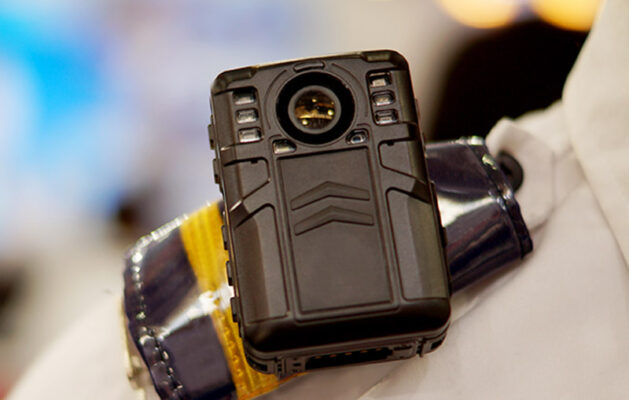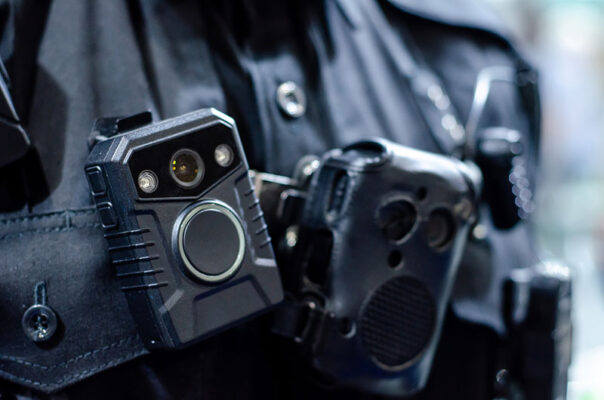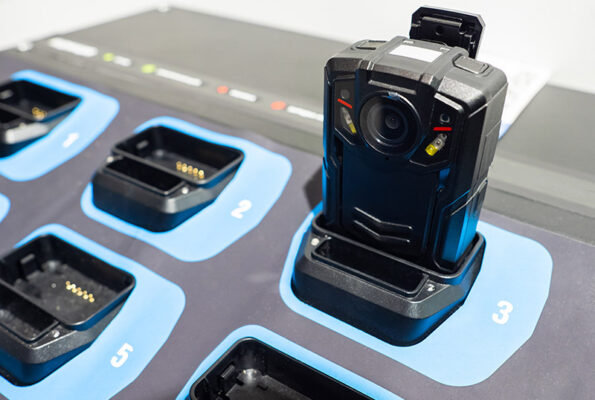What’s Next for the Future of Body Camera Technology?
By Greg Oppenheim
March 4, 2025
Estimated reading time: 3 minutes

Body-worn cameras (BWC) have come a long way since their early use in policing. They have since spread to other industries, including:
These intuitive devices can capture and transmit video and audio, enabling faster response to events happening in real time. However, this was not always the case. BWCs were once far from today’s innovative solutions.

The first BWCs sat atop the officer’s shoulder and were unwieldy. They consisted of multiple components:
Early BWCs also had push-to-talk (PTT) features that were substituted for the shoulder microphone. The video quality and real-time communication were rudimentary compared to today’s standard products.
Nevertheless, their quality and durability evolved with connectivity and the Internet of Things (IoT). These enable their operations, making them smaller and faster. This ongoing evolution is rapid, driven by law enforcement needs, which must accomplish more with fewer resources and staff.
The near future of BWCs includes three categories:
High-definition (HD) video recording, low-light performance and wide-angle lenses are becoming standard features. They enable officers to capture clear, detailed footage in various lighting conditions and environments.
Additional features like Global Positioning Systems (GPS) tracking, livestreaming and wearable sensor integration enhance BWC functionality. These make them indispensable tools for law enforcement and security professionals.
Leveraging cloud technology, law enforcement agencies can:
Cloud-based platforms also offer advanced features, including:
These enable agencies to derive valuable insights from BWC footage. In addition, they boost operational effectiveness and support education and training opportunities.
AI-powered video analytics can:
These capabilities allow law enforcement to review large volumes of footage and generate actionable insights quickly. Moreover, these AI-driven features expand potential BWC applications.

The future is bright for BWCs, but the horizon is brighter. Even more impressive innovations will transform these critical devices. New technologies will allow BWCs to undergo miniaturization, ruggedization and AI activation.
Batteries will also improve significantly. Many police departments, due to resource limitations, can’t provide a BWC per person. They require officers to swap BWCs when shifts change.
Swapping BWCs is impossible if the device has a limited life span or unremovable batteries. It is unsafe for an officer to use a depleted BWC. As such, extended charge life and swappable batteries will be invaluable.
Other trends on the horizon include reduced hardware and network costs and expanded network infrastructure. These will increase coverage, especially in remote areas. The evolution of regulatory standards will also boost trust and usage in law enforcement agencies and other industries.
The BWC and IoT markets are intertwined. As one market advances, so does the other.
Telit Cinterion has over 30 years of IoT enablement experience. We are well positioned to develop specialized IoT solutions for BWC use cases.
Our IoT modules are ideal for these applications and provide technologies like:
Telit Cinterion’s connectivity plans and custom solution services empower you to bring your IoT-enabled BWC solutions to market confidently.
Speak with our IoT solution experts to learn how Telit Cinterion can simplify your IoT ecosystems.